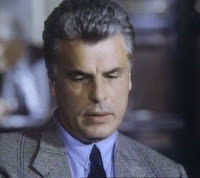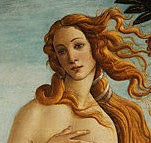Enjoyed box office success after partnering with Will Smith
 |
| Gabriele Muccino won awards in Italy before achieving success in the United States |
Muccino, who also directed Smith in Seven Pounds (2008), spent several years in Hollywood following his success in Italy with L’ultimo bacio (The Last Kiss), which won him a David Di Donatello award as Best Director and for Best Screenplay.
His most recent work has been in Italy, with his latest film, Gli anni più belli (The Most Beautiful Years) released in February 2020.
The son of Luigi Muccino, an executive at the state television company RAI, and painter and costume designer Antonella Cappuccio, Gabriele enrolled at Rome’s Sapienza University to study literature, but was already fascinated with the cinema.
Indeed, he abandoned his studies soon after he began them, choosing instead to attend Rome’s renowned Centro sperimentale di cinematografia, where he worked unpaid as a director’s assistant, working with the highly-regarded Pupi Avati and Marco Risi.
With Avati’s encouragement, he acted before he directed, taking a role in a TV mini-series that ran for nine months, but disliked the experience and decided he felt more comfortable behind the camera rather than in front of it. His earliest efforts as a director included a short film, Nani, in which both his younger sibling, Silvio, and his grandmother appeared.
 |
| Giovanna Mezzogiorno and Stefano Accorsi in a scene from Muccino's breakthrough movie, L'ultimo bacio |
After modest success with Come te niente mai (Like You Nobody Ever) in 1999, Muccino’s major breakthrough came in 2001 with L'ultimo bacio, which starred Giovanna Mezzogiorno and Stefano Accorsi as a couple expecting their first child whose happiness is wrecked when Accorsi’s character embarks on an affair with an 18-year-old girl.
As well as winning him critical acclaim, the film grossed 13 million euros and enjoyed a run of six months in Italian cinemas. Early in 2002, the film was presented at the Sundance Film Festival in Utah, where it was well received.
More success followed for Muccino with Ricordati di me, which was shown to English-speaking audiences as Remember Me, My Love, which was released in 2003 and starred the Italian superstar actress, Monica Bellucci, alongside Fabrizio Bentivoglio and Laura Morante, with a role also for Muccino’s brother, Silvio.
 |
| Will Smith and his son, Jaden Smith, in a scene from The Pursuit of Happyness, directed by Gabriele Muccino |
The two collaborated again on Seven Pounds. Both movies were box-office successes, together grossing almost 500 million dollars. Muccino continued to work with A-list actors in America with the comedy Playing for Keeps (2012), which starred Gerard Butler, Jessica Biel, Catherine Zeta Jones, Uma Thurman and Dennis Quaid among others, and Fathers and Daughters (2015), featuring Oscar-winning actor Russell Crowe and Amanda Seyfried.
In Italy, he directed Baciami ancora (Kiss Me Again) in 2010 as a sequel to L’ultimo bacio, with Accorsi reprising his role, this time opposite Vittoria Puccini, as well as L’estate addosso (2016), which was titled Summertime for English-speaking audiences.
Gli anni più belli, which features a title song written and performed by the enduringly popular singer-songwriter Claudio Baglioni, tells the story of four friends spanning 40 years, from their adolescence in the 1980s of Muccino’s youth to the present day, charting their own successes and failures but also how Italy has changed in that period. Much of the film was shot on location in Rome, Naples and Ronciglione, a rugged town in the Cimini mountains near Viterbo in Lazio.
Muccino is married to the costume designer Angelica Russo, who has worked on several of his films.
 |
| The Centro sperimentale di cinematografia in Rome is western Europe's oldest film school |
Located near Cinecittà in Rome, the Centro sperimentale di cinematografia (Experimental film centre) is the oldest film school in western Europe, founded in 1935 during the Benito Mussolini era by his head of cinema Luigi Freddi. Still financed by the Italian government, it focuses on education, research, publication and theory. With only six places per class, the selection process is highly competitive. Situated six miles south of the city centre, Cinecittà is the largest film studio in Europe, spreading over an area of 100 acres with 22 stages and 300 dressing rooms, and is the hub of the Italian film industry.
 |
| The quaint medieval area of Ronciglione, used for location shooting in Gli anni più belli |
Ronciglione, known locally as Ronció, is a town about 20km (12 miles) from Viterbo, on the southeast slope of the former volcano crater now housing Lake Vico. The main sights include a well-preserved medieval centre, a castle originally built in the middle ages, with characteristic angle rounded towers, and a Baroque cathedral designed by Pietro da Cortona, rebuilt by Carlo Rainaldi between 1671 and 1695. Ronciglione is known for its carnival and the Palio of the Manna, which features riderless horses competing for each of nine contrades (parishes). It is the birthplace of the singer-songwriter Marco Mengoni.
Also on this day:
1470: The birth of poet and scholar Pietro Bembo
1537: The birth of anatomist and surgeon Hieronymus Fabricius
1943: The birth of singer Albano Carrisi, who performs as Al Bano
Home





















